Princelet Street Synagogue was one of many small orthodox Ashkenazi synagogues in London’s East End. The building was originally constructed in 1719, and served as a synagogue from 1862-1963. This post is about the history and mysteries of the Princelet Street Synagogue.

The photographs in this post were taken by Rabbi Jeremy Lawrence, and are shared with kind permission.
Origins and Building
Princelet Street Synagogue, located in London’s East End, has a fascinating history that dates back to its construction in 1719.
Originally known as the Princes Street Synagogue, it is situated at 19 Princelet Street, formerly called Princes Street. Today it is the oldest building on the street, which you can see in the photograph below.

Princelet Street has seen waves of immigration over the centuries, from the Huguenots, to the Irish, Jews and Bengalis. When 19 Princelet Street was first built in 1719, it was home to the Ogier family. The Ogiers were affluent French Huguenots, who had prospered in the silk trade.
There were many Huguenots in the area at the time. They were mainly silkweavers, silversmiths, and merchants. By the second half of the 19th century, however the former Huguenot houses in Spitalfields had become home to Jewish families.

In 1869, a group of Polish Jews leased 19 Princelet Street. The building, which spans five floors, is small inside, as there are only two rooms on each level. There was however, a large garden at the back, and so the synagogue was built over the garden.
The synagogue is long and narrow, and has a women’s gallery on the first floor. The skylight in the ceiling is adorned with coloured glass.
Today the synagogue is no longer in use, but remains much the same inside. In the photograph below you can see what the stained glass ceiling, and women’s gallery look like today.

On the wooden panels under the women’s gallery you can see faded gold writing, which record donations from Jewish philanthropists at the time. Some of the names include the British banker, Leopold de Rothschild, banker and MP, Samuel Montagu and MP Julian Goldsmid.

Some of the old furniture remains inside the synagogue, and there are holes in the the walls, floors and ceilings where you can see some of the original structure, paint, and wallpaper.
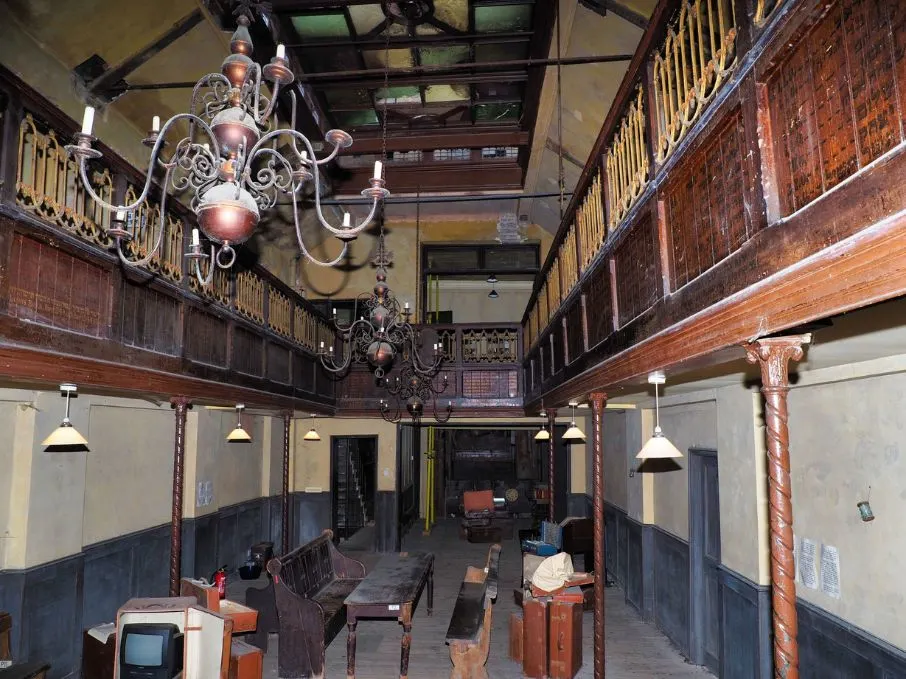
One of the synagogue’s most distinctive features was its skylight of coloured glass. This glass allowed soft, filtered light to illuminate the interior during services.

Congregation and Closure
Princelet Street Synagogue served as a place of worship for the orthodox Ashkenazi community for almost a century. It was typical of many small orthodox synagogues of its time, relying on donations from wealthy patrons.
The synagogue helped people who couldn’t pay the United Synagogue fee by offering low-cost or free marriage ceremonies. The photograph below shows some of the charity boxes found within the synagogue.

You can see the charity box below, was from Wilkes Street Synagogue (originally located at 93 Wilkes Street in Spitalfields, just around the corner from Princelet Street). This charity box is today at Princelet Street Synagogue.

On Charles Booth’s Poverty map of London (1898-9), the synagogue was coloured in black, meaning “Lowest class. Vicious, semi-criminal.” Today there are few buildings of that classification that still remain.
Below is an image from Charles Booth’s Poverty map, with the synagogue marked with a yellow arrow. You can see the building is coloured black.

The synagogue’s basement was used for antifascist meetings during the 1930s, including planning the Battle of Cable Street against Oswald Mosley’s blackshirts in 1936.
The synagogue finally closed in 1963, when it merged with the Bethnal Green Synagogue. For two decades, the it was forgotten, but David Rodinsky, a reclusive Jewish scholar, continued to live in the attic.
The photograph below shows the view from one of the upstairs rooms of the synagogue, where David Rodinsky lived.
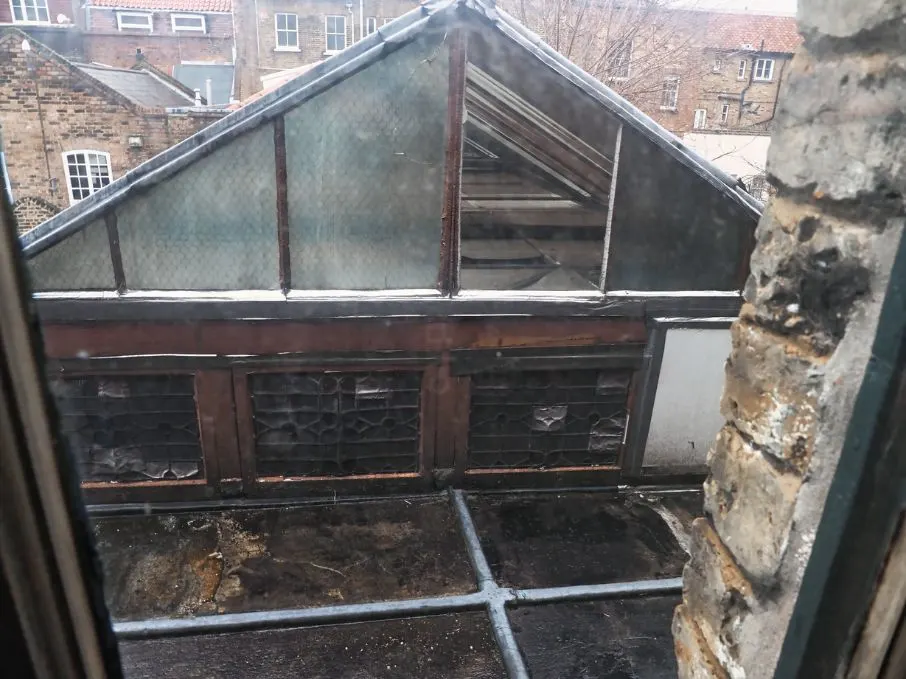
David Rodinsky: The Vanishing Scholar
David Rodinsky was a caretaker who lived on site at Princelet Street Synagogue. He was a reclusive young man who lived in the attic. In 1969, six years after the synagogue closed, he vanished without a trace.
Fourteen years later, in 1983, the building was bought by the Spitalfields Housing Trust, and Rodinksy’s room was unlocked for the first time.
Inside they found a room frozen in time. The bed had been left unmade, there was a pot of porridge on the stove, and a half finished cup of tea next to the bed.
The room was chaotic and filled with books, newspapers, cryptic writings and personal items. Some of the items included gramophone records, clothes and a London A-Z which was marked with obscure journeys into the London suburbs. There were also scraps of paper and sweet wrappers covered in writing, in many languages.
Documents found in the room revealed that Rodinsky had mastered fifteen different languages (most of them dead), and had a fascination with the Kabbalah. The photograph below shows the staircase leading to the upstairs rooms of the synagogue where he lived.

The photographs below show the upper rooms of Princelet Street Synagogue, where David Rodinsky lived.


Today, the rooms still contain old furniture and household items, including a Singer sewing machine, and suitcases filled with thread.



What Happened to David Rodinsky?
David Rodinsky was born in 1925 at 73 Hanbury Street, and moved to Princelet Street seven years later. After his mother and sister died in the early 1960s, Rodinsky remained in Princelet Street until early 1969, when he mysteriously disappeared.
It was later confirmed that David Rodinsky died in Long Grove Mental Asylum in Surrey, in March 1969, at the age of 44. He is buried in Waltham Abbey Jewish Cemetery.
The photograph below shows one of the old doors inside Princelet Street Synagogue, where Rodinksy lived.

Further Reading on Rodinsky
The artist, Rachel Lichtenstein, was intrigued by the abandoned room of David Rodinsky, and embarked on a quest to discover his story. This led to her publishing the book Rodinsky’s Room, which she co-authored with Iain Sinclair.
Curiously, Lichtenstein was born in March 1969, only a few days after Rodinsky died. The book is not only about Rodinsky’s life, but also explores the themes of identity, obsession, loss, and the disappearing way of life in London’s Jewish East End.
You can order a copy of Rodinsky’s Room on Amazon. (Please note that link is an affiliate link, which means I receive a commission if you make a purchase, at no extra cost to you.)
Princelet Street Synagogue Today
Today Princelet Street Synagogue is a Grade II Listed Building. Although the building is not open to the public, you can still see signs from the outside of the old Jewish presence in the area.
Next door to the synagogue (17 Princelet Street), was the birthplace of Miriam Moses, a liberal politician. She was the first female mayor of Stepney, and the first female Jewish mayor in the UK. There is a blue plaque on the building, which can be seen in the photograph below.

Across the street, at number 6 (previously number 3), there was a Yiddish theatre. It was the first purpose built Yiddish theatre in London, established in 1883. The location is marked on the pavement where you can see a manhole depicting a violin.
Photographs of Princelet Street Synagogue Today
Below is a collection of photographs which show the inside of Princelet Street Synagogue today. The photographs have been generously shared with permission from Rabbi Jeremy Lawrence. You can see in the first picture below that the chandeliers within the synagogue still bear candlesticks.

Below is the Ark that once held the Torah scrolls.
















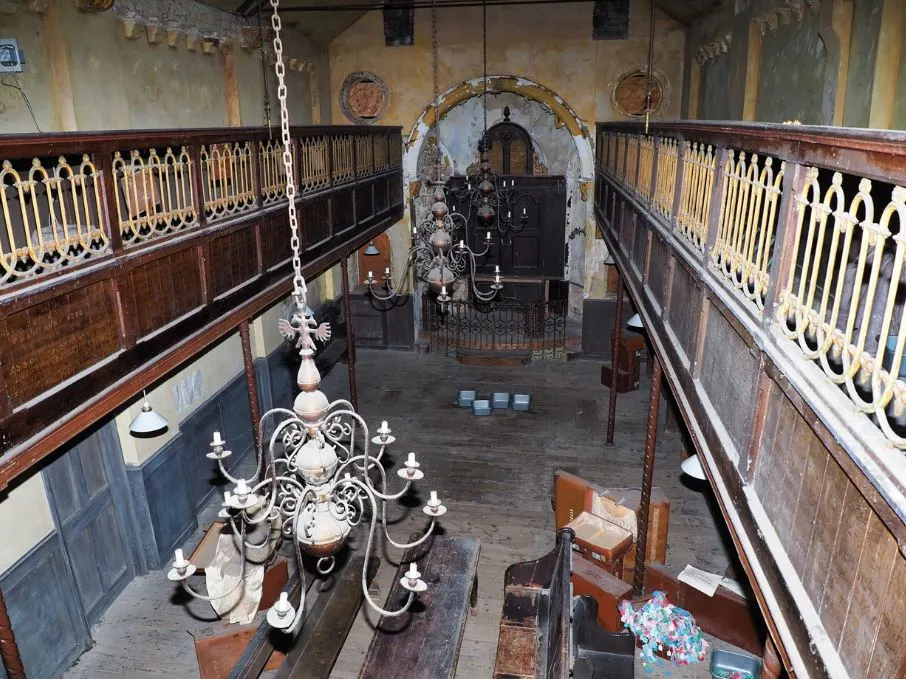



The photograph below was taken from the women’s gallery, on the first floor. This elevated section allowed women to participate in services while maintaining separation from the men.




The wooden plaque below is dated September 1870. It records donations by Jewish philanthropists to the Princes Street Synagogue, and the Loyal United Friends Friendly Society – known as the Chevras Nidvath Chen in Hebrew(חֶבְרַת נִדְבַּת חֵן).
The Chevras Nidvath Chen was founded in 1862 by Jewish immigrants from Poland living in Spitalfields. The society aimed to provide support and community for its members, and establish a place of worship in the area.




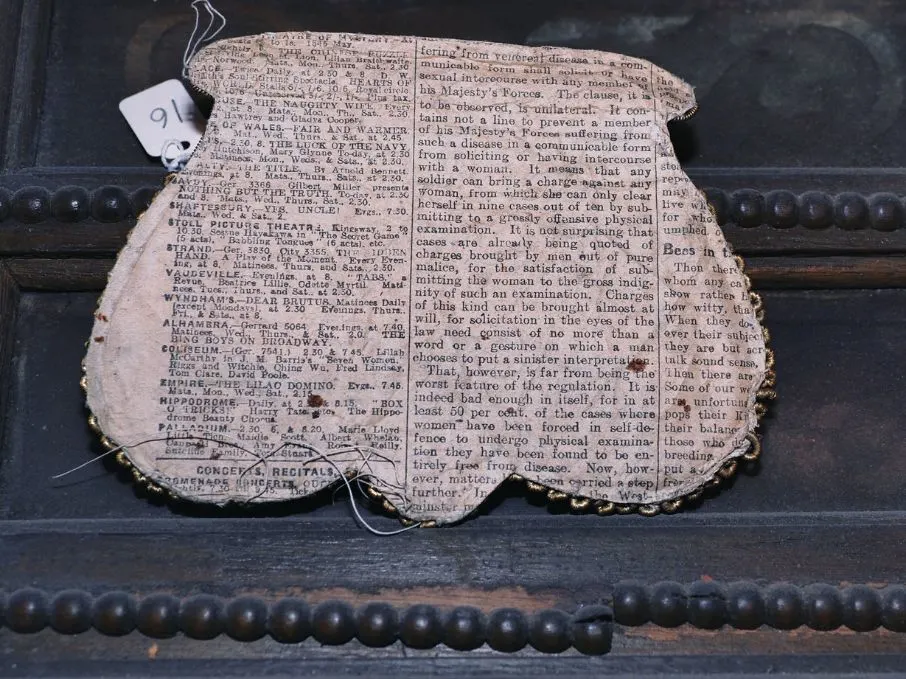



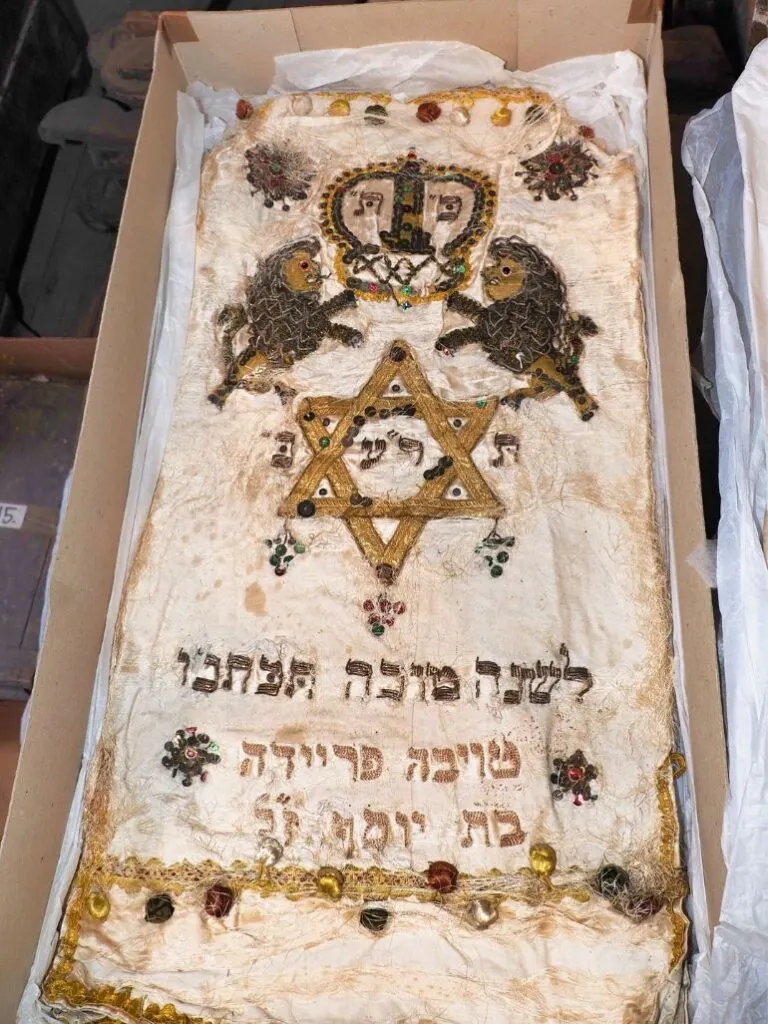



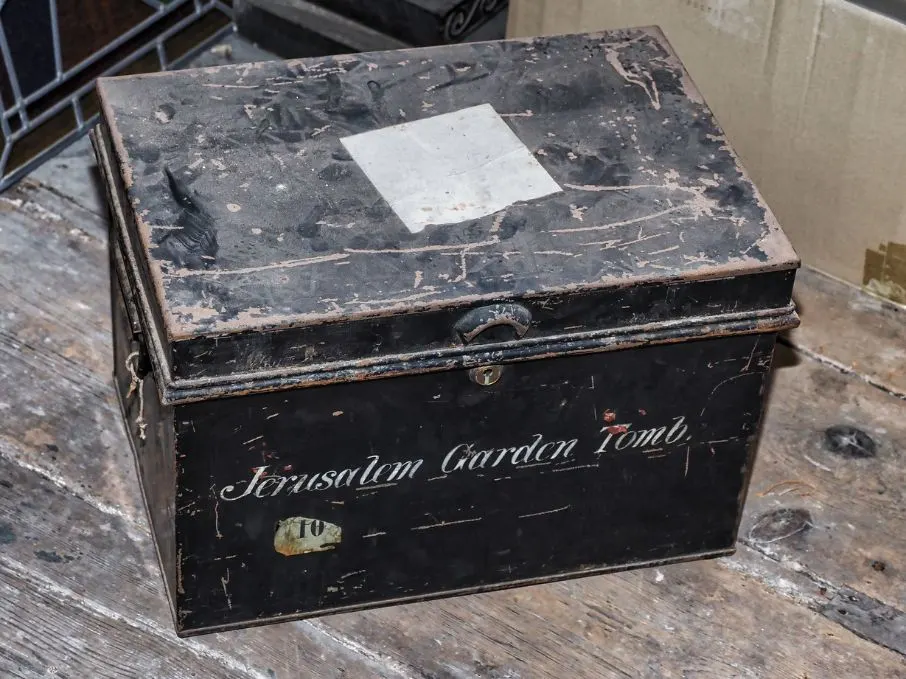
You can see below, an old mezuzah on a door post inside the synagogue.

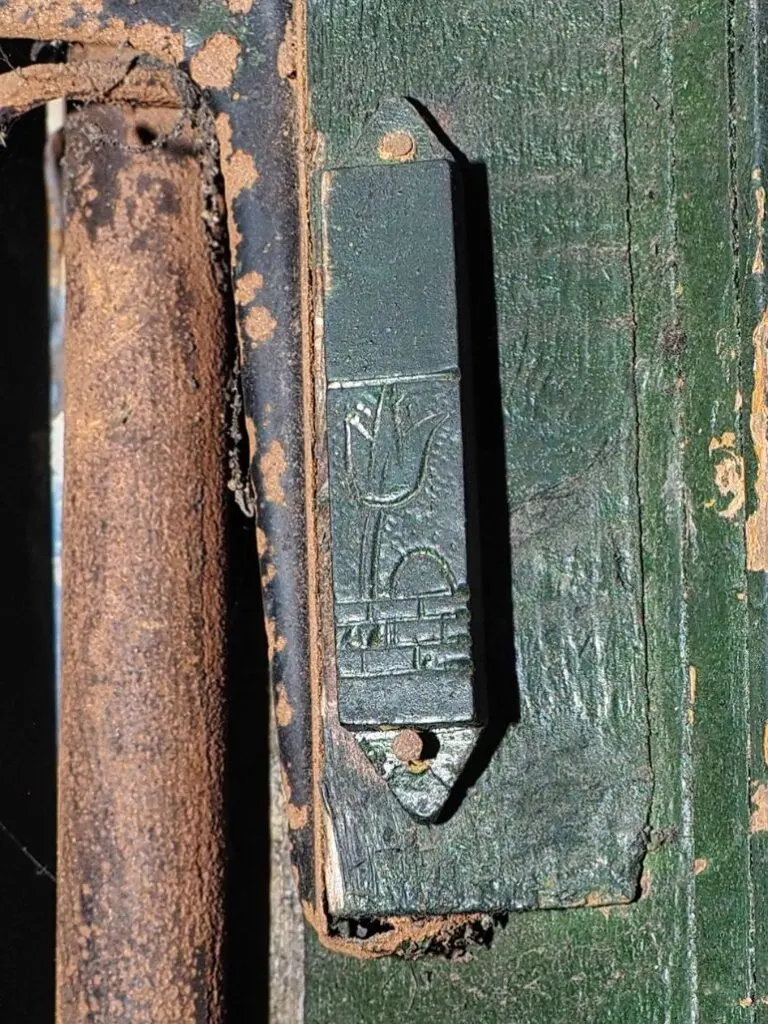





Location of 19 Princelet Street
The exact location of the old Princelet Street Synagogue is shown on the map below.
This post was about the History of Princelet Street Synagogue
Thank you for reading my post about Princelet Street Synagogue. Today the Museum of Immigration is at 19 Princelet Street. It is a short walk from Brick Lane where you can see Epra Fabrics, located opposite the junction with Fashion Street. Epra Fabrics is the last remaining Jewish textile business, set up in 1956 and still run by the Epstein family.
If you enjoyed this article, please leave a comment below.

